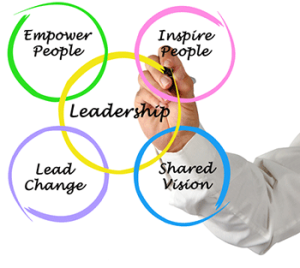This is one of my favorite topics!
I have been an executive director and development director several times over.
I know the frustrations deep in my being, and I also know what it feels like to be apart of a team – including donors – that change lives.
Underdeveloped* A National Study of Challenges Facing Nonprofit Fundraising revealed that many nonprofits are:
stuck in a vicious cycle that threatens their ability to raise the resources they need to succeed.
Sobering, but not big news for those of us who have been there.
More significantly, it revealed deeper issues including a lack of basic fundraising systems and inadequate attention to fundraising among key board and the executive director.
Regardless of the developmental stage of your organization, the following 3 priorities are the most important areas of your job.
Why? Because without them, your big ideas can’t be achieved sustainably.
The fact is, you’re never done learning, and as you become more seasoned, the results become substantial and more rewarding.
Priority #1: Your professional growth
One in four executives directors report that they lack the skills and knowledge to secure gifts – and one in five don’t particularly like doing it. Yikes!
Executive directors at high-performing organizations were twice as likely as their peers to say they “love” asking individuals for donations.
Committing deeply to inspiring and aligning your staff and board around a what it means – and requires – to be a philanthropic organization begins with you, the executive director.
This is a tall order for most ED’s. The big question is how do you do it?
In a word: learning! Reading, training, leadership development, coaching, and support from your peers.
Professional development – and time spent with colleagues that are a step ahead of you – will help you gain the skills to create a strong partnership with the board chair.
You’ll learn more about how to overcome challenges engaging the board as ambassadors in donor cultivation and solicitation.
The executive director has to be an instigator, a champion, and a role model to bring fundraising into the heart of the organization and keep it there. The development director cannot do this alone.
You don’t need to be an extrovert to achieve this. It may be difficult, but you can still enjoy it.
The bottom line: it begins with you. It’s your job to set the stage and lead. But first, you have to learn how.
Priority #2: Your relationship with the board chair
Executives overwhelmingly say board engagement in fundraising is lacking. 82% of executives among organizations with operating budgets of under $1 million—call board member engagement insufficient.
Here’s the thing. The mark of effective leadership and fundraising is not an individual who “does it all”; rather, it’s the full leadership team that fuels high performance over the long haul.
Board chairs and executive directors are the key leadership team of nonprofit organizations. Building and nurturing this relationship must be a priority.
A little time invested on a regular basis can pay huge dividends over time as the board and the executive director collaborate more effectively to accomplish mission objectives and financial stability.
The potential of the board chair-executive director relationship to increase your organization’s resources and community partnerships is great and unrealized.
Priority #3: Improving your organization’s conditions for fundraising success
Many nonprofit organizations lack basic fundraising systems and plans creating the conditions for fundraising success.
Conditions for success include having a development plan, technology and systems, professional development, and an effective partnership among with the board.
Without adequate attention to building your infrastructure as you grow, including adding staff, your efforts will be limited.
If you’re just getting started, one way to learn more about this, and get it funded – just google it. And get training.
Lastly, the most important outcome in the study according to the top experts in the sector, is helping nonprofits create a a culture of philanthropy with their organizations.
I have always found this to be an obscure concept, but it is essential to understand.
Here is the formal definition:
Your organization has a culture of philanthropy when:
- Most people in the organization (across positions) act as ambassadors and engage in relationship building.
- Everyone promotes philanthropy and can articulate a case for giving.
- Fund development is viewed and valued as a mission-aligned program of the organization.
- Organizational systems are established to support donors.
- The executive director is committed and personally involved in fundraising.
*Underdeveloped was a joint study by CompassPoint and the Evelyn and Walter Haas, Jr. Fund.
Do you find this overwhelming? I have found with many of my clients that having context and an understanding of the big picture can be helpful.
It can also be hard.
Would you find it helpful to learn more about the above in smaller chunks? Yes or no is a ok response.



Leave A Response